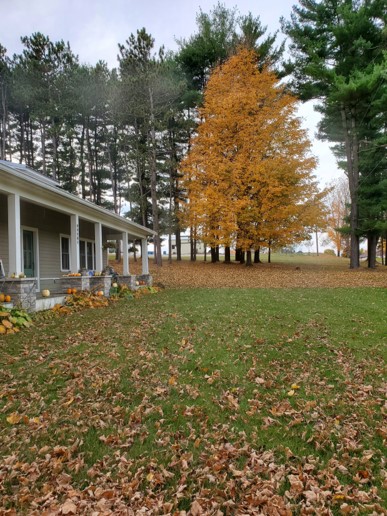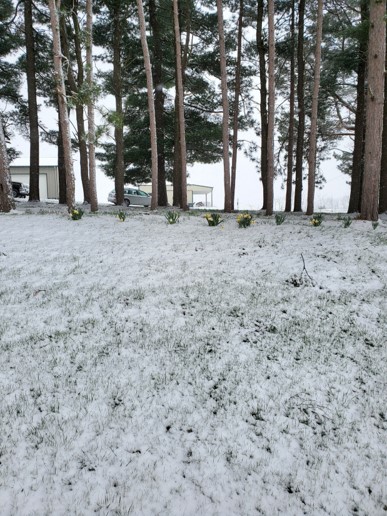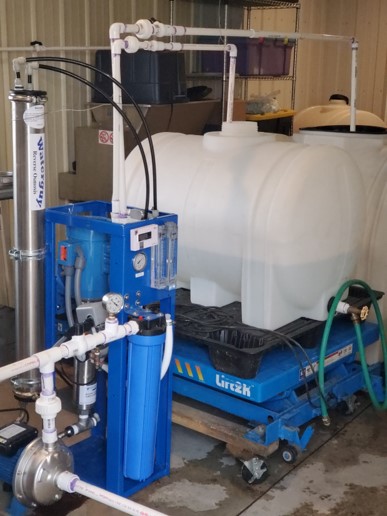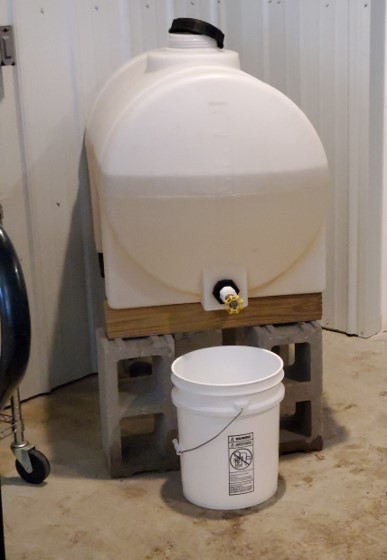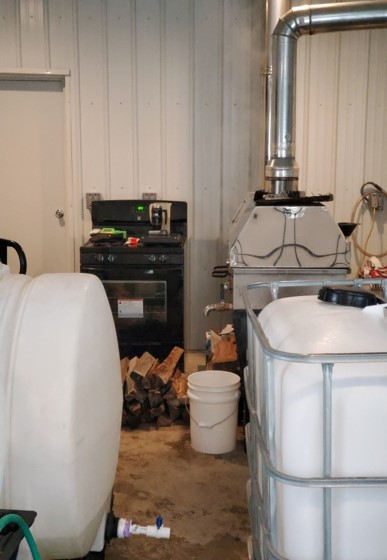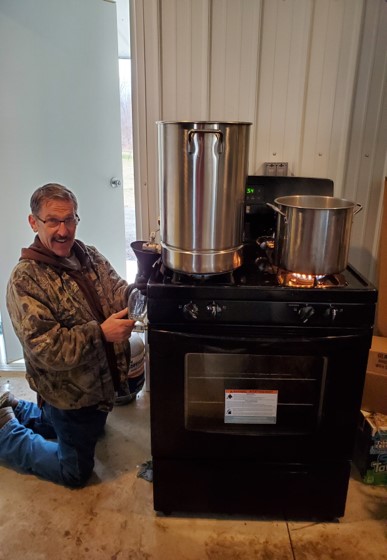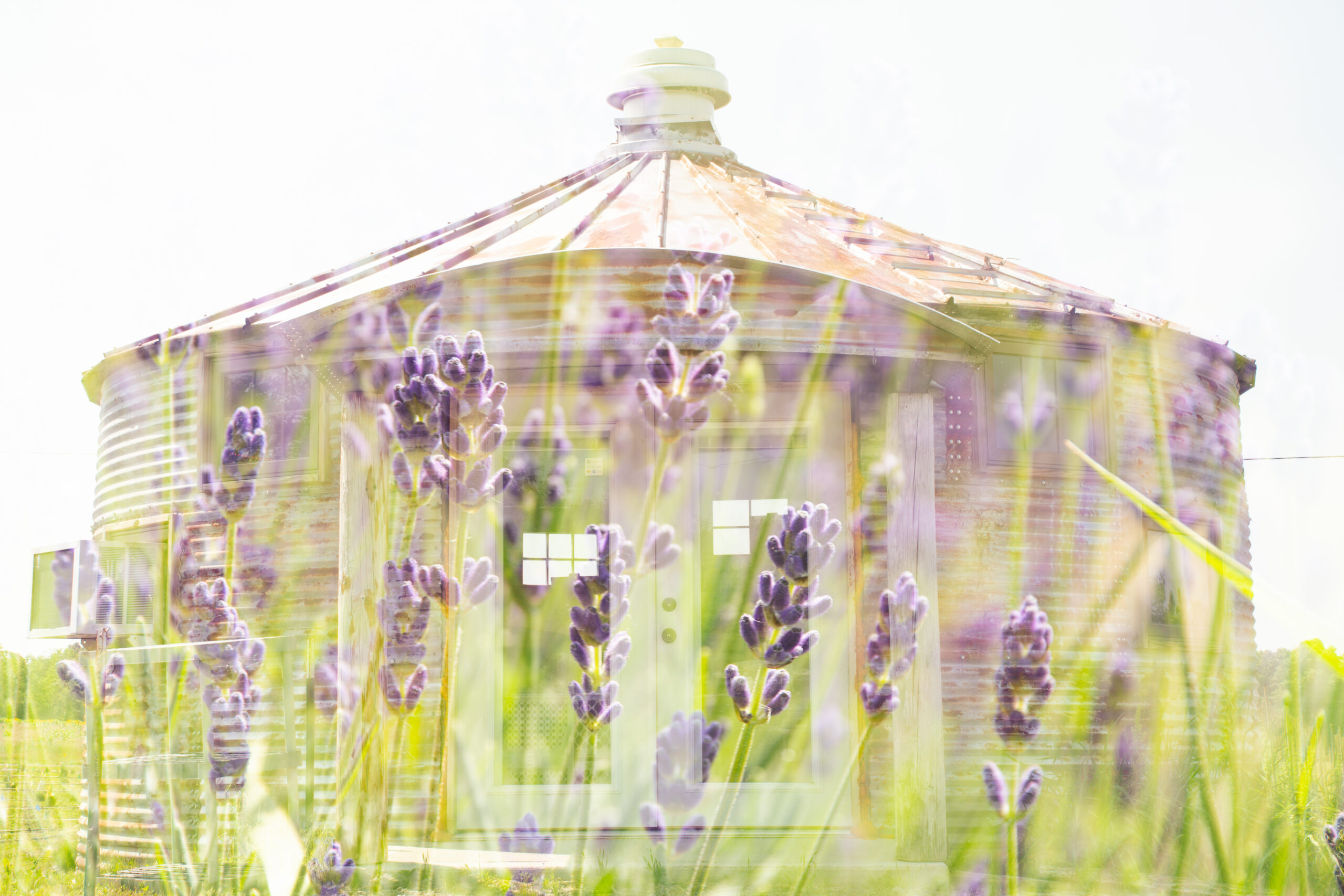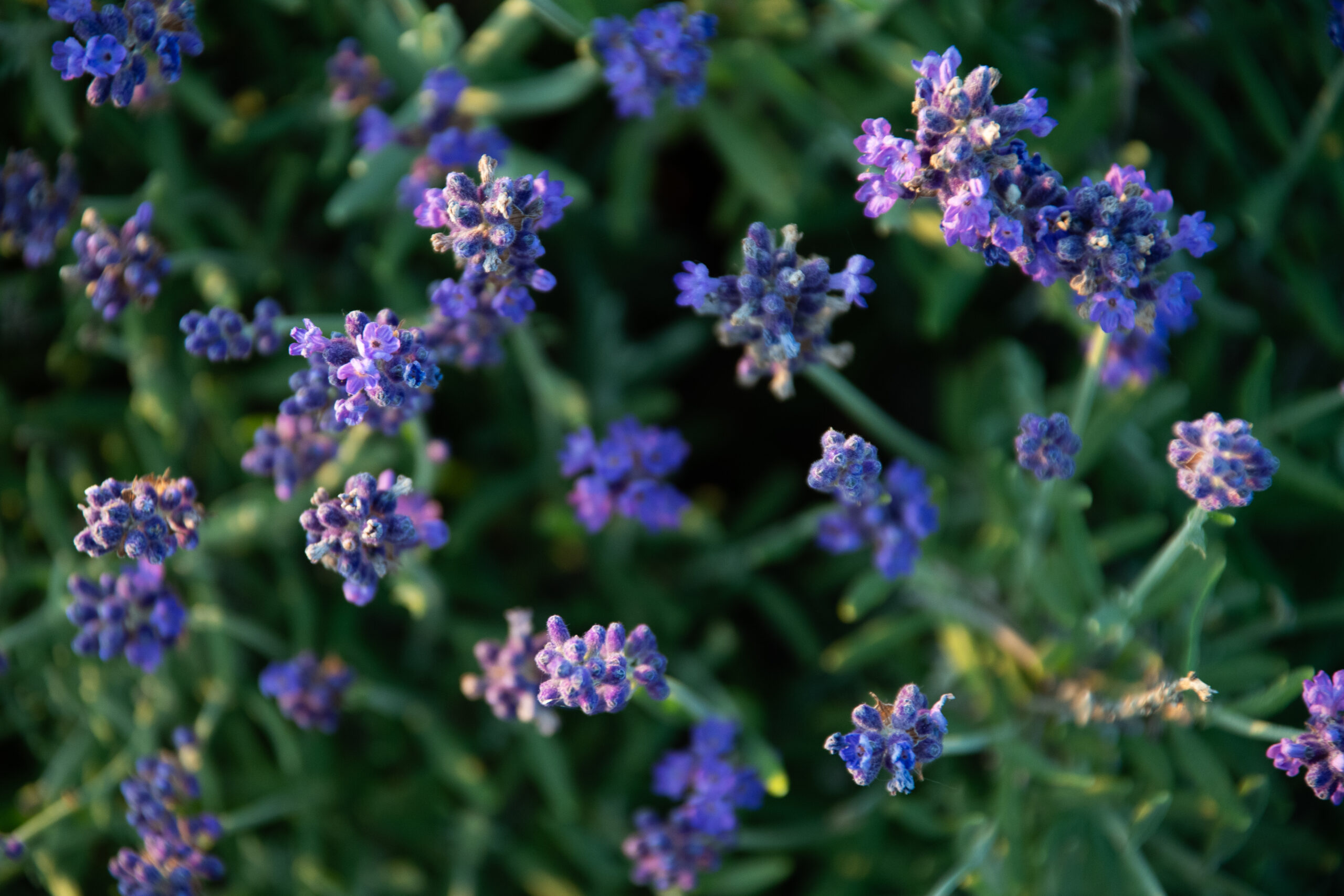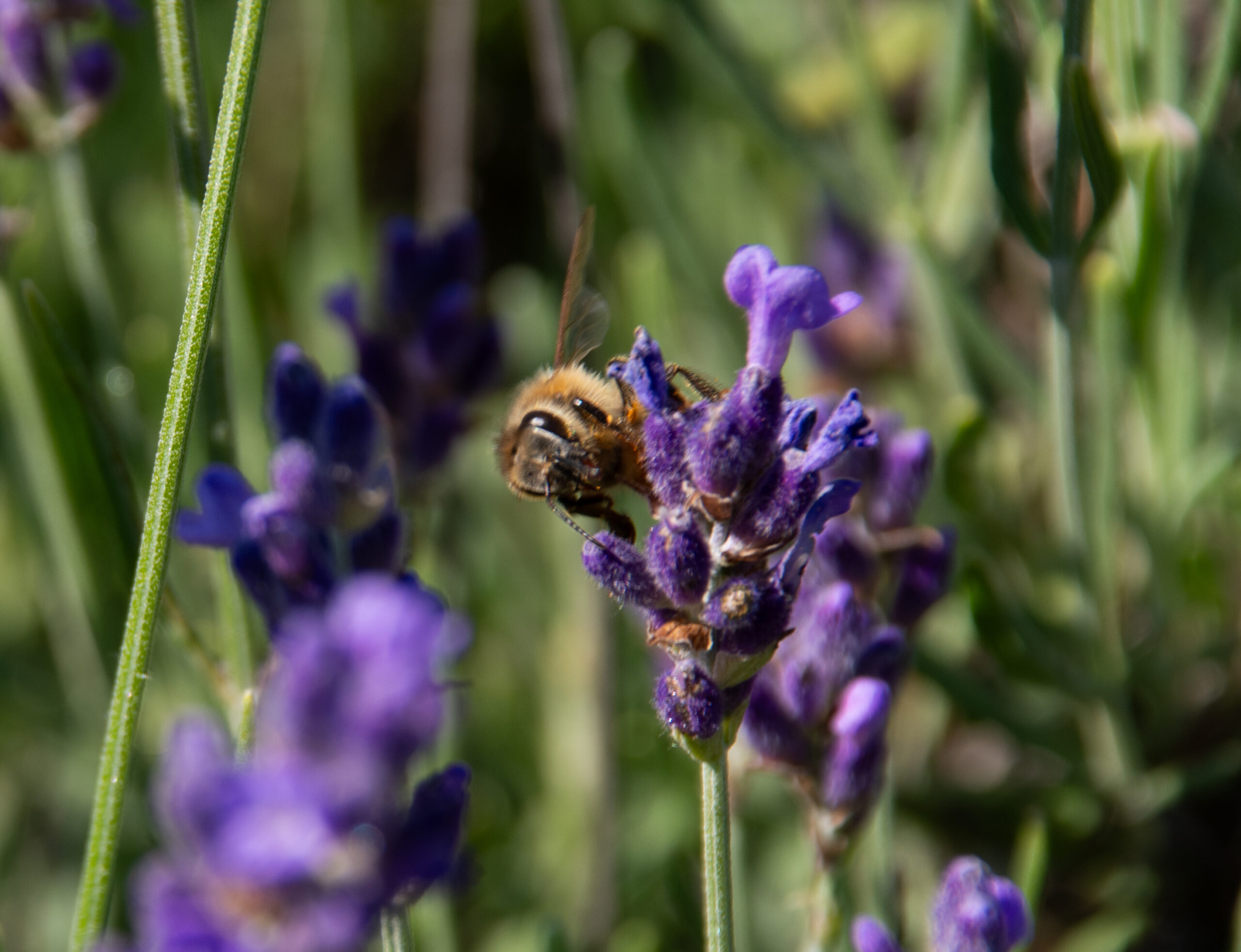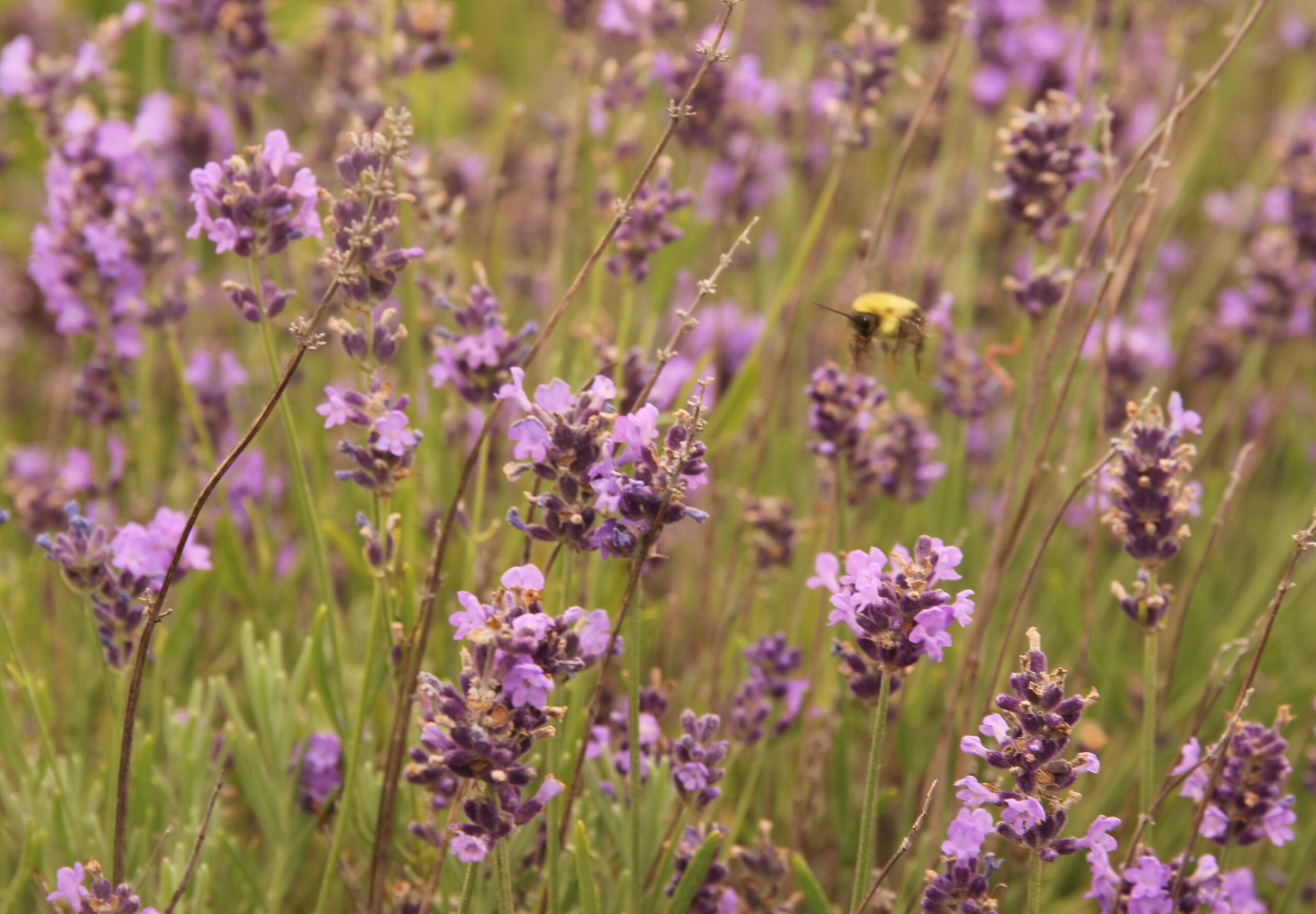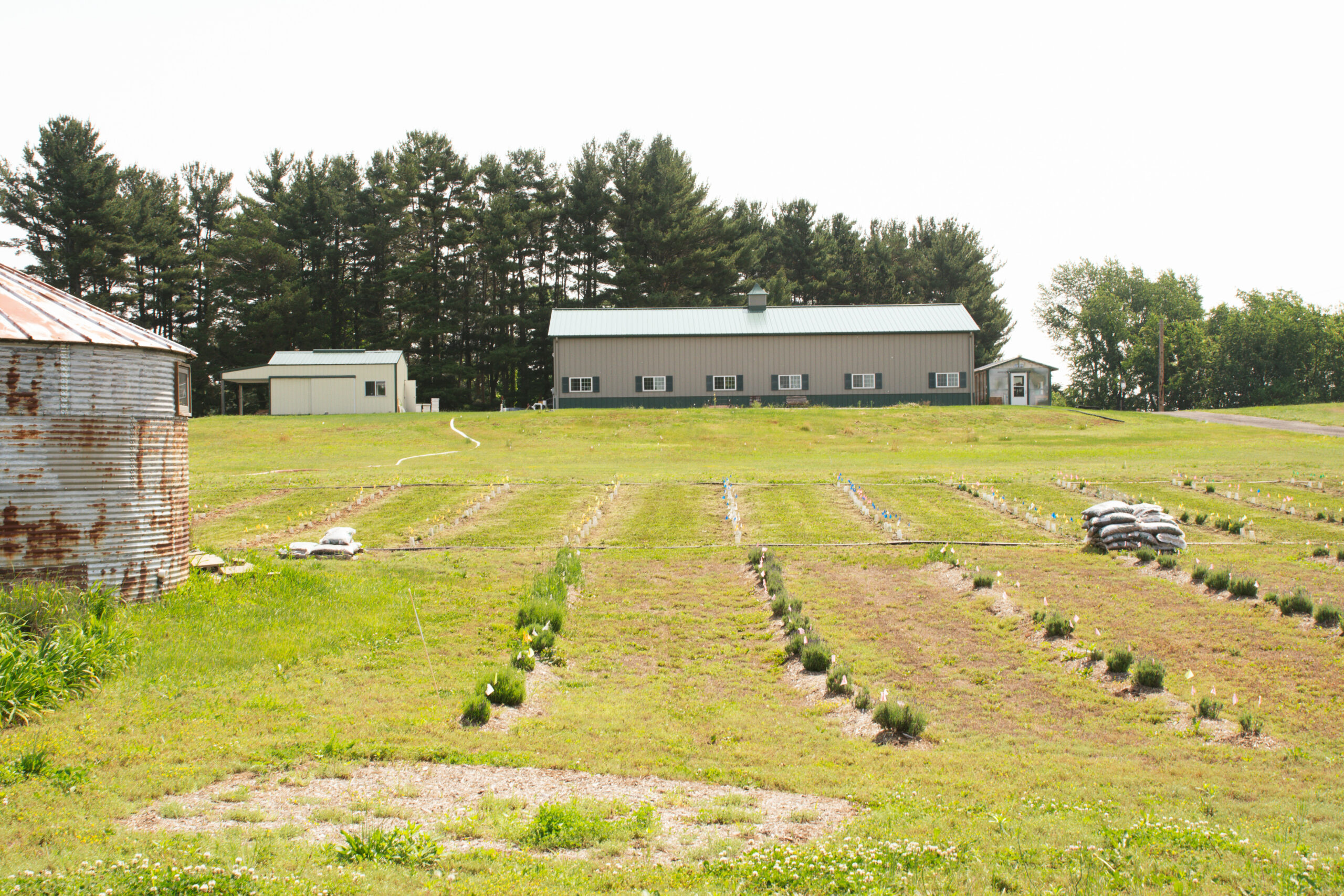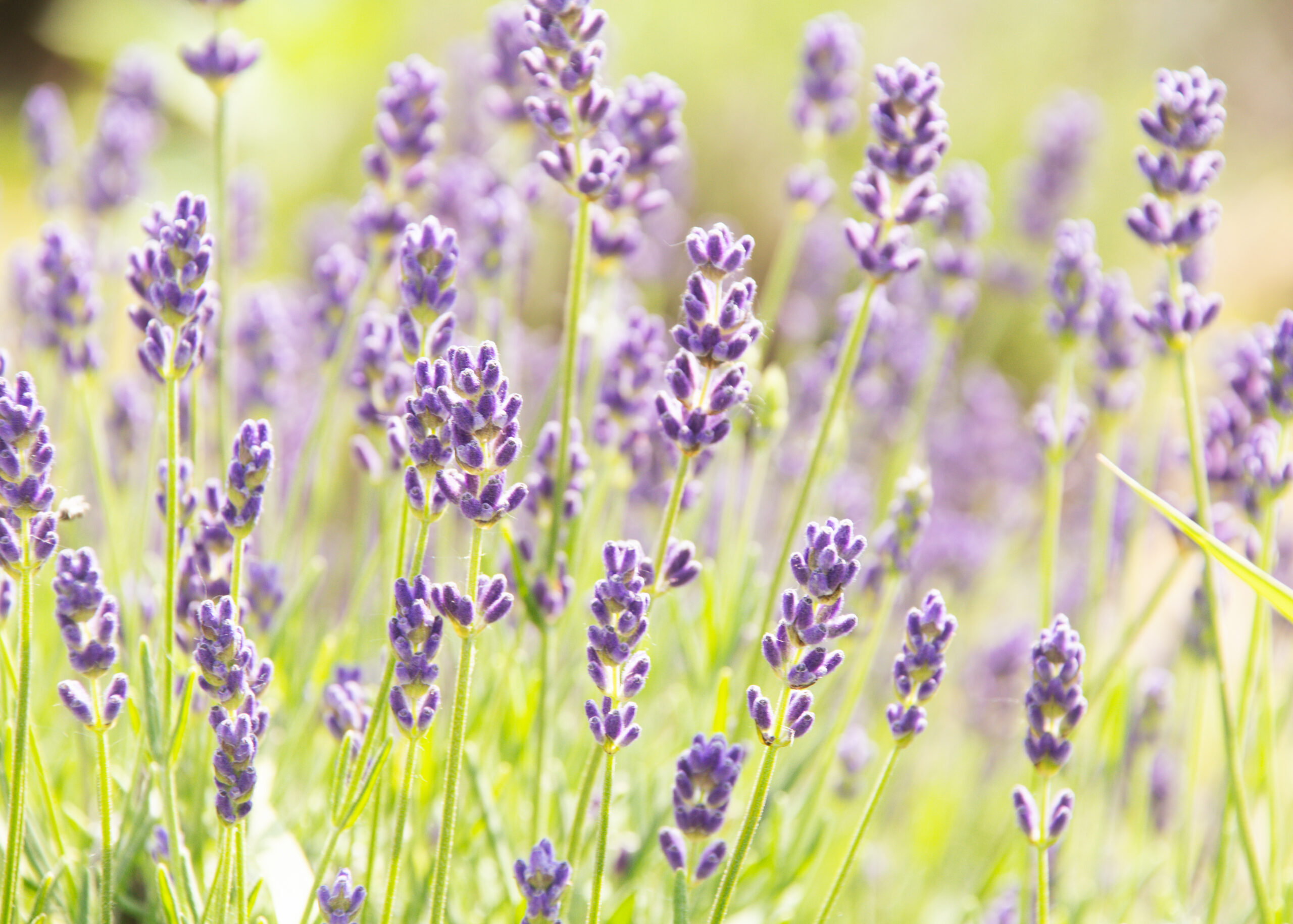We have a 36’ x 36’ fenced apiary on our farm. It sits a quarter mile south of County Road 1000, our northern border. There is also a protective moraine between the two.
The apiary’s 6’ fence has so far kept out large mammals, including deer, coyotes, and the legendary Michigan Bear that is reputed to visit our area periodically. The fence does less well with smaller animals, such as racoons and skunks, but we trap them humanely and release them as far from the apiary as our property extends. Sometimes this works.

And sometimes not. A raccoon almost succeeded in knocking over this hive.
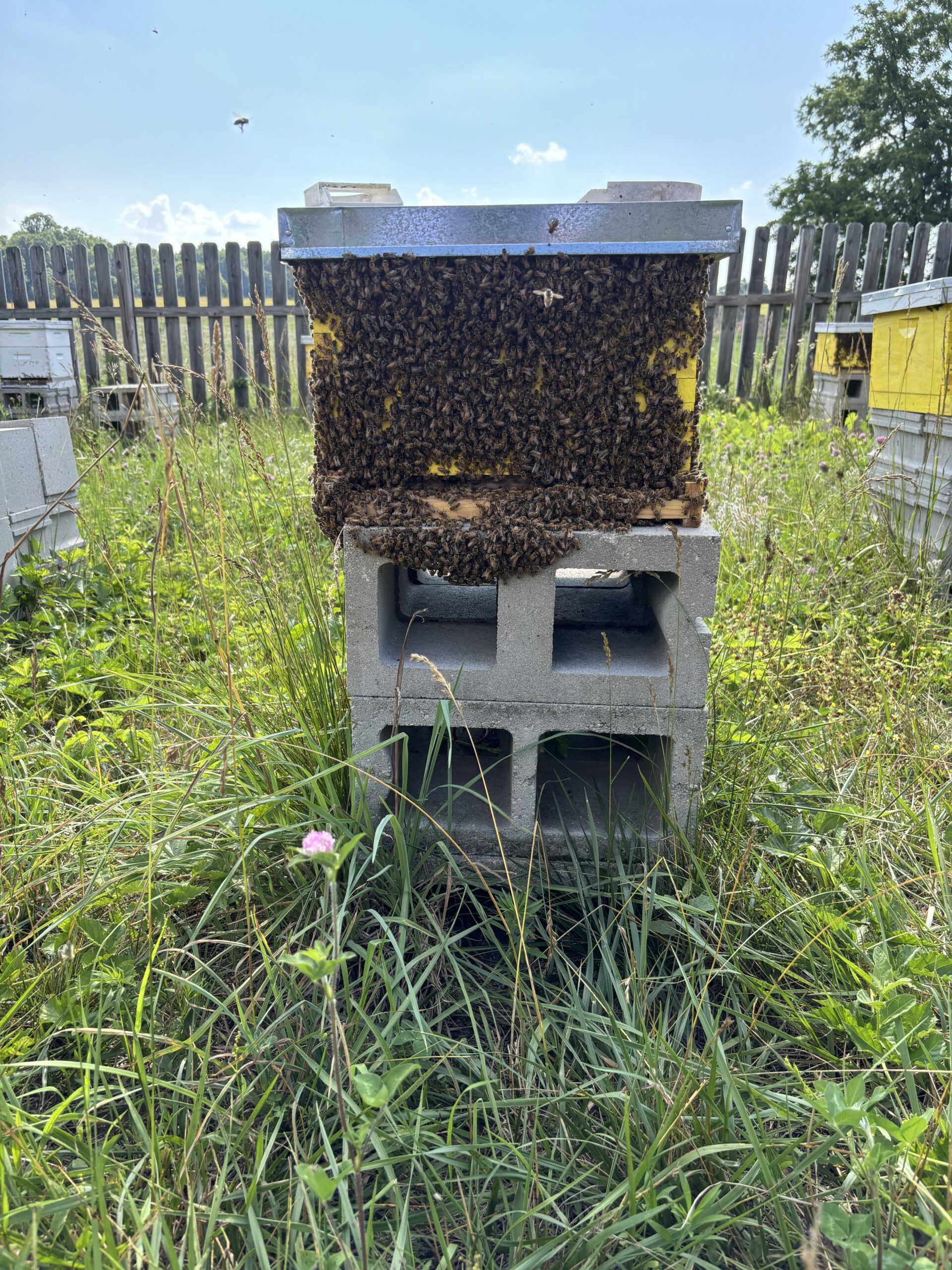
BTW, Opus Apum® is Latin for The Work (Opus) of Bees (Apum).
If there were room on the label, we would expand our trademark to Opus Apum Apiariorumque (The Work of Bees AND of Beekeepers).
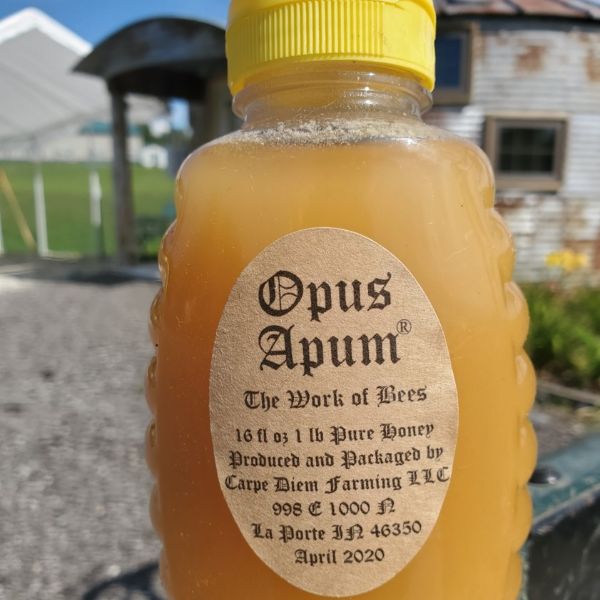
Forest Products
Ramps
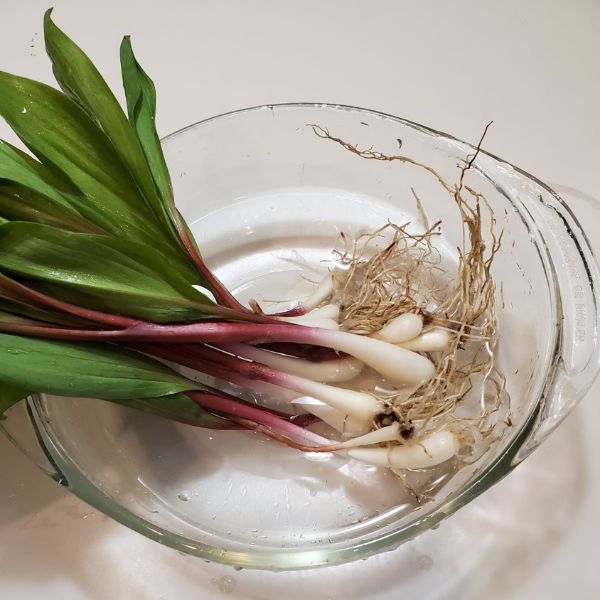
Sugar Maple Trees
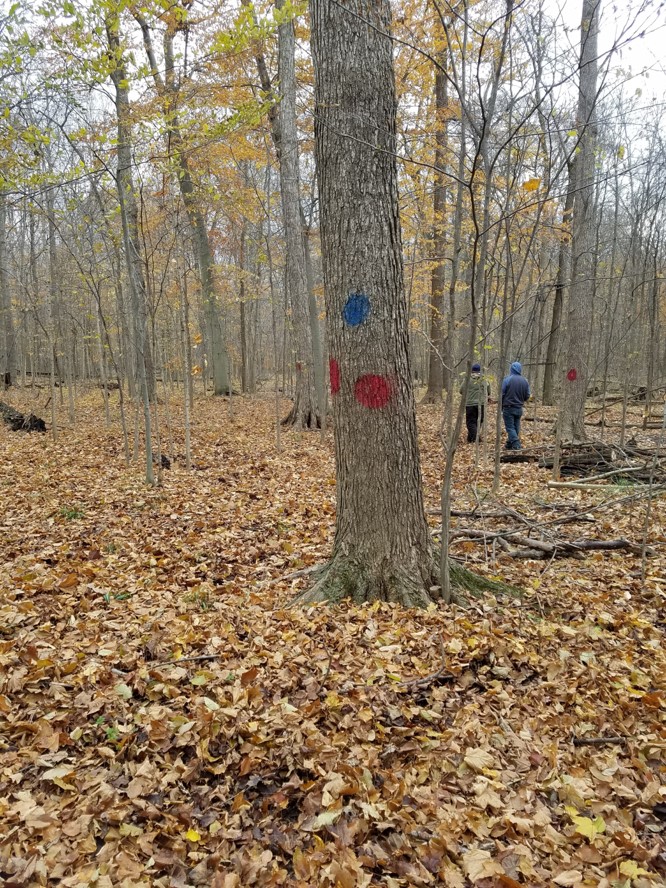
Hazelnuts/Truffles
In February 2019 we visited a truffle farm near Bordeaux. After we returned home, we thought about growing truffles ourselves, and we discovered Garland Truffles of Hillsborough, NC. The founder, Frederick Garland, has developed an ingenious method for this, but it has never been tested at a latitude (and climate) as far north as ours.
This was a challenge we could not refuse.
In September 2019 we planted 72 Garland hazelnut trees that had been inoculated with Tuber uncinatum, the Burgundy truffle fungus. The trees did well over the winter and into the spring, so we planted another 72 plants in May 2020. These did well also – every plant survived – so we will plant another 144 inoculated trees in the spring of 2021. All these 288 trees are from the same Garland 2019 generation.
It is said to take somewhere between 5 and 10 years for a nurse tree to produce truffles; but when they do, they each produce about a quarter pound each. The same time frame is true for the filberts that the trees produce. Our hazelnuts will all have had five full summers in the sun, in Hillsborough and La Porte, by Fall 2023.
Watch (or bookmark) this space!
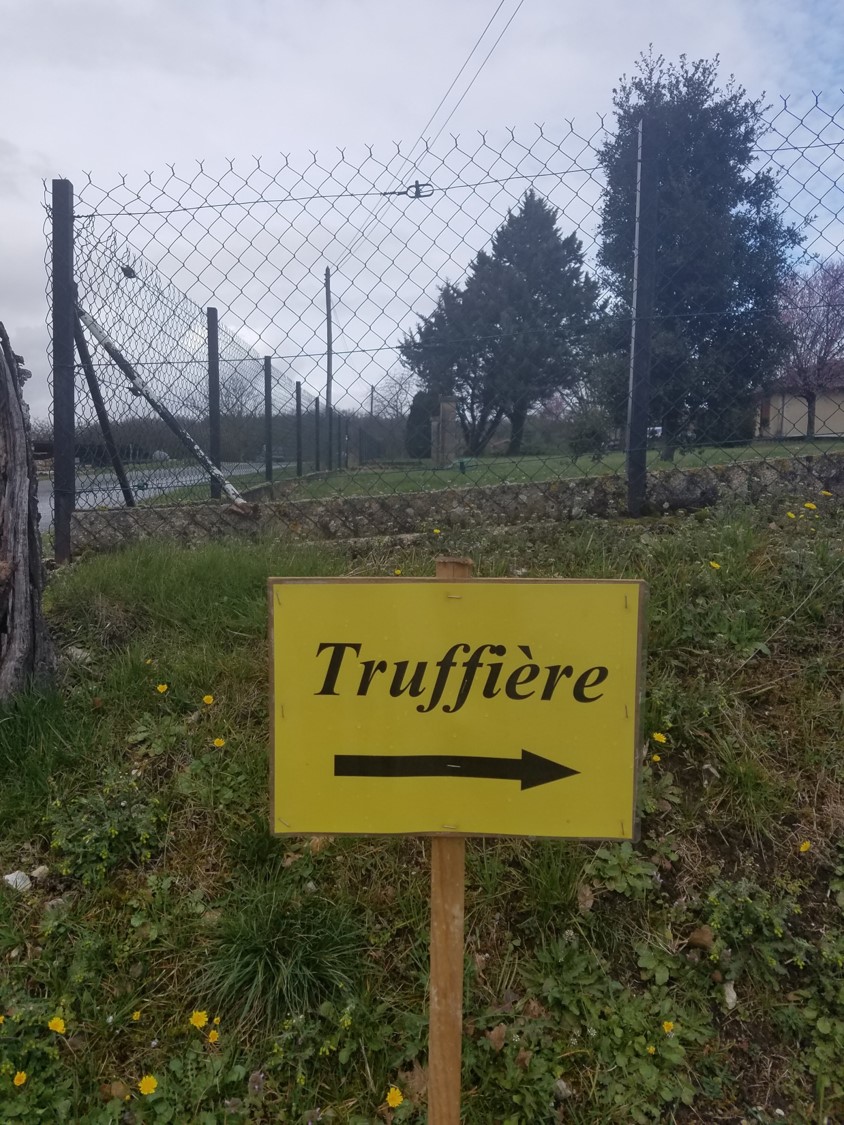
Maple Syrup
The ten acre Indiana Certified Forest on our farm contains a grove of 130 sugar maple trees with a circumference of over 60 inches. Their sap begins to rise about March 1, and this marks the beginning of our Farm Year. Last year we collected 1600 gallons of sap from 80 trees.
We only tap 80 of our 130 sugar maples in a given year because our trees produce about a gallon of sap a day at the peak of the season, and our processing equipment (and personnel) can only handle about 400 gallons of sap per week. Since it takes
About 50 gallons of sap to make one gallon of syrup, and since one gallon of syrup makes only ten 12 ounce bottles of syrup, we produce only eighty 12 ounce bottles of syrup a week. Some years the sap runs for three weeks, others for four. Somewhere between the third and the fourth week the demands of the rest of the farm take over.
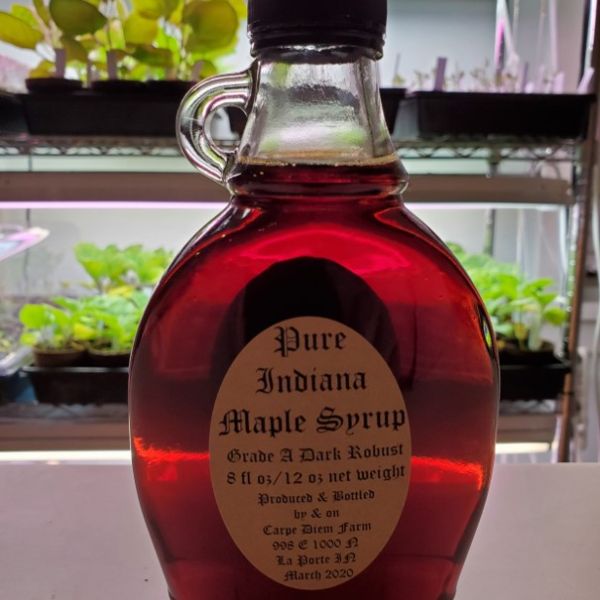
We use reverse osmosis equipment (3) to concentrate the sap from a Brix of 2 to a Brix of 10, collect this 5x concentrate in (4), then add it to a wood-fired evaporator (5) to concentrate the Brix to 60, and a propane-fueled kitchen stove to concentrate the Brix to about 69. The syrup is pumped directly from the stove while still at boiling temperature through a paper filter into a stainless steel cannister, where its final Brix is adjusted with boiling water directly from our farm well to within its legal range of 66.9-67.9 Brix. The syrup is then filled into pre-sanitized 12 ounce bottles (6). The bottles are capped while still hot and stored in our secure food production facility at ambient temperature until sold retail at our farm stand or to local restaurants or grocery stores. We welcome inquiries from all.

